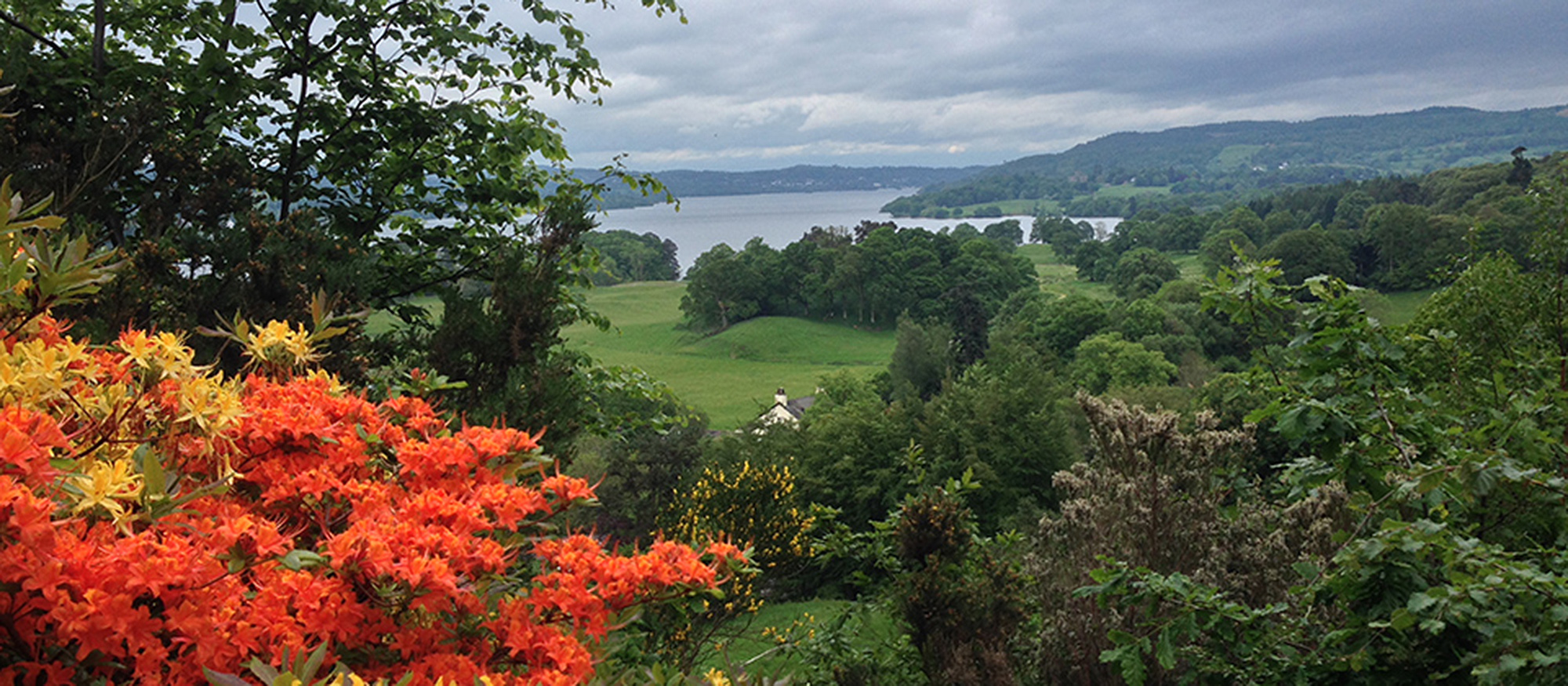So much to
see and visit
White Craggs, is situated at the Northerly edge of Lake Windermere, in the hamlet of Clappersgate, its nearest town being Ambleside.
Ambleside, itself, known as the 'Jewel in the lakeside crown' is easily accessible by motorway or rail from the major towns and cities of the UK. It is a bustling, thriving town a mere mile away from the north end of Lake Windermere. As a visitor attraction it has a range of amenities including shops, cafes, pubs, restaurants and its own cinema. It is ideally located as a pragmatic starting point to access all parts of the Lake District. Clappersgate is the Lakeside crown's sparking gem
If Ambleside is the 'Jewel in the lakeside crown' Clappersgate, is one of its most sparkling gems. Clapperesgate, straddles the banks of the River Brathay, between Ambleside and Skelwith on the A593. Popular with canoeists, the beautifully quaint and picturesque village is ideal as a central base to explore the rest of the Lake District.
The Lakeside towns of Windermere, Grasmere, Bowness, Hawkeshead and Coniston are within easy motoring distance from Ambleside all situated within the Lake District National Park. The Lake District Park National Park, lies entirely within the county of Cumbria and is the most central and visited part of the Lake District. It is one of England's few mountainous regions with much of its land higher than three thousand feet above sea level.
The Lake District promises a fascinating tapestry of beautiful landscapes and scenery to be admired from classic walks, climbs and rambles. Running through that rich and sumptuous tapestry are threads of history and culture with countless stately homes and houses, churches, galleries and museums to visit. Made famous when an exodus of British poets chose it as their home in the early part of the 19th century, it is not difficult to see how the Lake District creatively inspired William Wordsworth, Samuel Taylor Coleridge and Robert Southey, collectively known as the Lake Poets. In Coleridge's own words "Water, water everywhere"


Discovering
our roots
The Lake District has a wealth of densely forested and woodland areas, much of it populated by the British and European Oak. The woodlands provide habitats for native English wildlife. The Red Squirrel, for example, is found in the Lake District and in a few other pockets of rural England.
n parts of the Lake District the rainfall is higher than in any other part of England. This gives Atlantic mosses, ferns and lichens and liverwort a chance to grow. There are also areas of Ancient Woodland in the National Park with stretches of coppiced and pollarded areas some managed, with others left to grow naturally and others provide grazing and shelter for livestock. Woodland and forest areas to visit include Tarn Hows; one of the most popular places in the Lake District, and is located between Hawkshead and Clappersgate, off the B5286.
Fell Foot Park is located on the south shores of Lake Windermere with the entrance on the A592. The park is under the care of The National Trust. Whinlatter Forest Park, is certainly worth a visit - near Keswick, as it is uniquely England's only mountain forest. There are an astonishing range of things to see in the Lake District. Historic sites such as Rydal Mount and Gardens, in Rydal, Ambleside between Lake Windermere and Rydal Water, once the home of Wordsworth, is a visiting must!
The Lake District's unique historic significance goes back as far as the Roman Empire. Hadrian's Wall is probably the most important monuments in Britain and a legacy of Roman architectural innovation. Built in the 120s AD, the wall runs for 73 miles from Wallsend, near Newcastle to Bowness-on-Solway in Worth, West Cumbria.
The Lake District has something to offer everyone. If a more adventurous holiday appeals to you, there are boundless opportunities for canoeing, mountain biking, rock climbing, horse riding and cycling.
For those wishing to pursue a gentler pace of life there are some fantastic golf courses and places to fish. There are also health and fitness clubs, day spas and beauty salons where you can indulge in some 'me' time.
If you tire of beautiful scenery, quiet idyllic walks, fantastic restaurants and eateries and the entire range of visitor attractions the Lake District has to offer, the City of Carlisle is just over an hour if travelling by car. Carlisle is the administrative and commercial hub of the northern half of Cumbria and is a vibrant and architecturally stunning City steeped in history. It is littered with shops, restaurants and visitor attractions and bursting with culture.
Rest assured, whoever you are, no matter what age you are, or whatever time of year you visit White Craggs, there is always something amazing to see and do. If you don't want to do anything, that's fine too!

